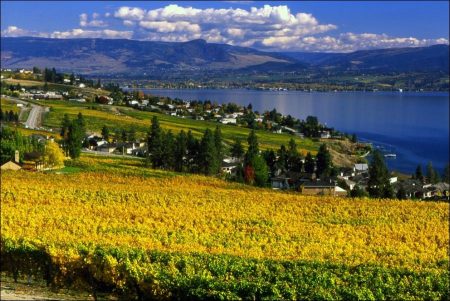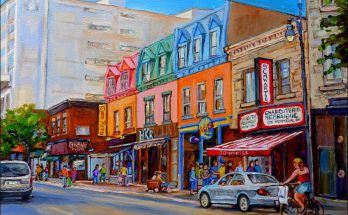The Okanagan is the most important valley in the region. Most of the terraces which flank the valley sides are intensively utilized for fruit growing. In summer, these vivid green patches stand out clearly against the brown, unirrigated grazing lands. Lakes occupy much of the valley bottom, but vegetables and small fruits are cultivated in a few low-lying sections. Behind the valley in the highlands, numerous small lakes serve as reservoirs to supply the farms with irrigation water by a simple gravity process.
The population of this prosperous valley has been increasing steadily since 1892, when only 400 people lived in the area. At the present time the population is 297,601, of which more than half is urban. Settlement is by no means uniform throughout the trench, but is concentrated in several rural-urban communities. The size of each urban centre depends directly upon the extent and prosperity of its rural hinterland. Such places as Kelowna, Penticton and Vernon are to be considered among the exceptionally attractive and pleasant small cities of Canada.
Kelowna
Kelowna, with a population of 106,707, is the chief distributing centre of a rich fruit growing district on Dark Brown Soils. It is located on the east bank of Lake Okanagan and is served by the Canadian National Railway from Kamloops, and by Canadian Pacific barges on Lake Okanagan to Penticton. A number of industries, such as saw milling, box making and fruit canning, are found in the city.
Penticton
Penticton is located at the southern end of Lake Okanagan. It serves a prosperous peach growing district on the Brown Soils of the southern Okanagan Valley. Excellent rail, air and highway facilities support the trade of the city. Its industrial and commercial functions are similar to those of Kelowna. In 2006, the population numbered over 31,909.
Vernon
Vernon (35,944) is an important trade city in the heart of the Black Soils area, near the northern end of Lake Okanagan. Diversified farming characterizes the environs of Vernon, but apple growing dominates. Canneries, creameries and other small industries, which are complementary to the agriculture of the area, have located in the city. The tourist industry is greatly encouraged by an active bureau. The Canadian National Railway serves the city.
Small Towns in the Okanagan Valley
Oliver and Osoyoos are the main towns in the extreme southern section of the valley. Vegetables and small fruits are raised under irrigation on Brown Soils, where the growing season is very long and the summer is the hottest and driest in Canada. To the south, in the state of Washington, a similar landscape obtains.
Summerland is located just northwest of Penticton. It is a small distributing centre and contains a large government experimental farm. Armstrong, Enderby and Salmon Arm are trade and transportation centres in the more humid northern quarter of the Valley. Mixed fanning has developed on the Podzolic Soils of the area.
Other Districts
The other valleys in the Fraser Upland region contain scattered settlements. A few irrigated orchards dot the landscape in the South Thompson Valley, but, in the main, most of the land throughout the region is used for cattle ranching.
Kamloops
Kamloops is the most important city outside of the Okanagan Valley. It is located at the confluence of the North and South Thompson Rivers and is a focal point of routes. Both the Canadian Pacific Railway and the Canadian National Railway use the city as a divisional point. Kamloops is the distribution centre for a wide area. Founded as a Hudson’s Bay post in 1812, it was incorporated as a city in 1893. A large sanatorium is located a few miles from the city at Tranquille.
Other Towns
Toward the west in the Thompson Valley, Ashcroft, Spences Bridge and Lytton are small trading centres. Keremeos in the Similkameen Valley, Merrit in the Nicola Valley, and Lillooet in the Fraser Valley, are the only other towns of any significance in the southern part of the region.
The Cariboo and Chilcotin districts have many large cattle ranches. The Pacific Great Eastern Railway traverses the area and serves such small communities as Clinton and Williams Lake. Many cattle are shipped from the latter town each fall. Quesnel is the northern terminus of the railway. It supplies the gold mining camps to the east.
Related Link: Travel to Canada
Visits: 137



